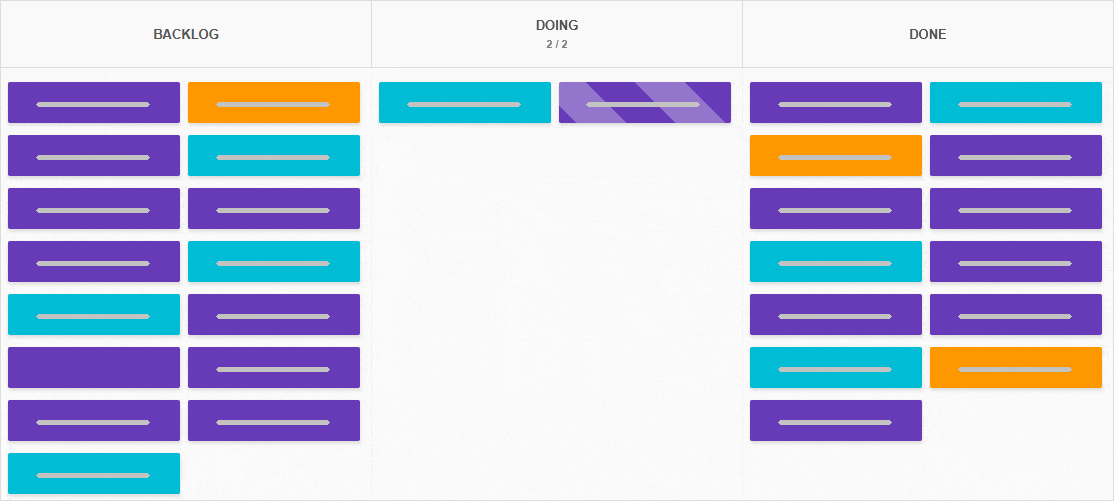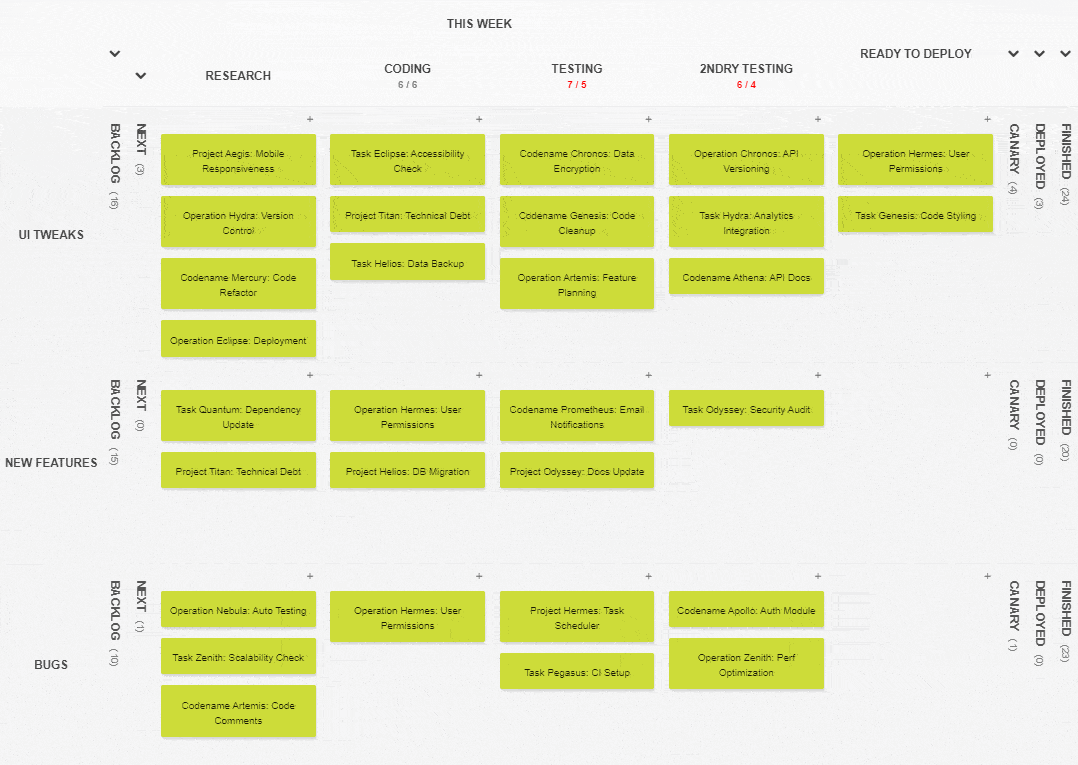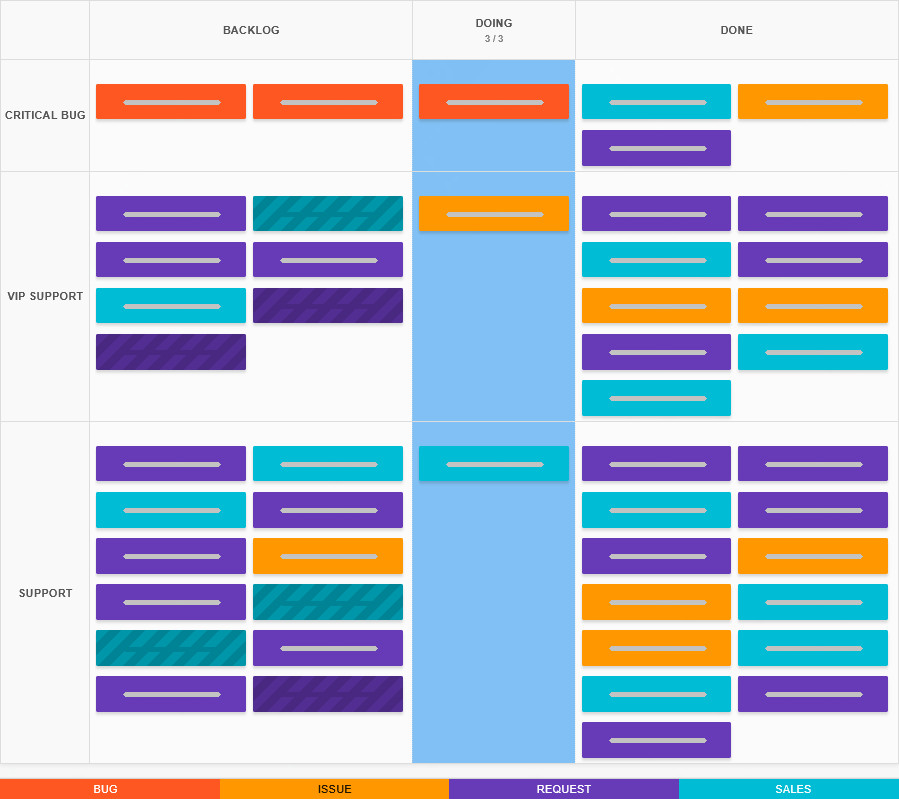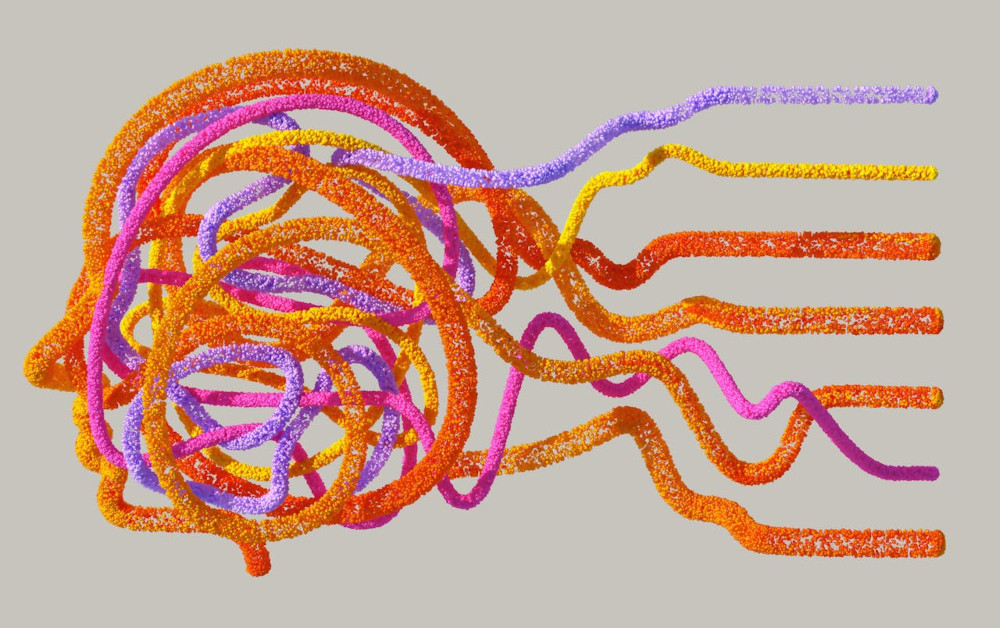Blog
How Kanban Clears the Mind17 Jul 2025

By distilling work into ordered, visible, manageable units, Kanban taps into fundamental principles of cognitive psychology. Having tasks organized in neat piles in front of you can restructure how your mind interacts with work itself. At its core, Kanban is a system of constraints— it's ironic, but it is those limitations that offer mental liberation.
Mental bandwidth and the dread of the invisible
The average person can comfortably hold a few items simultaneously in their working memory. Yet the expectations of a modern work environment balloon far beyond that. Task lists multiply, emails pile up along with call notes—priorities shift mid-day. Without a system for offloading mental processing, the brain can enter a state of cognitive overload — a constant background strain of remembering, juggling, and re-evaluating to-dos.
Kanban is perfect for intervening at this junction, transforming intangible commitments into discrete, visual units. Typically, it will be sticky-note-type cards on a physical or digital board split into columns representing the work completion stages, e.g., "To Do, In Progress, Done". With each card on the Kanban board standing as proxy for a mental placeholder, your brain no longer needs to retain, the system significantly lightens the cognitive load. The visual field takes over some of the burden of memory, freeing up executive function for task execution and problem-solving.

Focus through constraints
One of Kanban’s deceptively powerful elements is limiting work in progress (WIP). Capping the number of things in progress reflects the reality of attention bandwidth. When too many tasks are open at once, your attention splinters. Context-switching—often not even noticed—incurs measurable losses in efficiency and, crucially from a work quality standpoint, the depth of engagement.
By WIP-limiting, Kanban subtly enforces a principle supported by cognitive neuroscience: your attention is a bottleneck. Concentration cannot be split between multiple cognitively demanding tasks without a cost. Therefore, the WIP limit isn’t a disciplinary measure, but a psychological safeguard. While gently inviting prioritization, it discourages multitasking masquerading as productivity. Over time, this helps you develop a deep work rhythm: extended intervals of undivided focus, which has been linked to both higher output quality and subjective states of satisfaction.
Externalized object permanence and motivation
Tasks represented on a Kanban board aren’t just a static map of your workflow. They serve a motivational function rooted in a phenomenon known as the "Zeigarnik effect" — the psychological tendency towards remembering uncompleted tasks more vividly than finished ones. Kanban takes advantage of the mind’s habit of obsessing over unfinished tasks: instead of letting them rattle around in your head, it sends them onto a board where they’re visible and trackable, freeing your brain from having to keep them top-of-mind while retaining your - now externalized - intent to complete them. It perfectly turns a mental nuisance into a productivity tool.
But it goes further! Each card’s movement from left to right visually signifies progress, transforming the board into a narrative of motion and a concrete symbol of accomplishment. For knowledge-based workers forever engaged in abstract or protracted projects, such illustration of advancement offers a much-needed sense of momentum. The brain responds positively to evidence of progress — not just in the end outcome, but in the micro-steps leading to it. Kanban can help transform nebulous efforts into visible trajectories.

Pattern finding and environmental cues
Our brains are pattern-driven—constantly scanning for coherence, for signals that help minimize uncertainty. Kanban systems default to an ecosystem rich in visual cues: color-coded cards and spatial arrangements of status-driven signals. Rather than being decorative, these cues are perceptually guiding your behavior.
A well-designed Kanban board can become a functional extension of your cognition. For example, blocked tasks can be marked with red color, signaling the need for intervention. Swimlanes may separate different types of work or urgency levels. With repetition, these visual patterns become a legible system, conveying task status, priority, and blockers at a glance.

The board also functions as an ambient cue. Even peripheral exposure to a Kanban board during the day reinforces your awareness of ongoing goals, issues, and status. This environmental reinforcement quietly aligns attention with priority, reducing the risk of low-value interruptions derailment.
From abstraction to accountability
Lists and planners often suffer from abstraction drift — a phenomenon where tasks remain mentally vague and unbounded in time. Notes such as “Update report” or “Draft proposal” don't carry a spatial presence, lacking both detail and boundary. They exist as an easily deferred conceptual placeholder.
Kanban counters this by concretizing tasks as well as their status updates. The act of sliding a card from one column to another transforms the abstract into the mechanical. This motion, trivial on the surface, triggers a sense of ownership, which in turn feeds accountability.
Furthermore, shared Kanban boards introduce a social element. Items that linger in "In Progress" for too long become publicly visible stagnation points, causing friction. This friction demands task re-prioritization, seeking support, or completion. In this way, status transparency fosters action.

Emotional regulation and decision fatigue
Unmanaged task systems lead to emotional exhaustion due to ambiguity. The psychological cost of deciding what to pick up next — repeatedly without complete information — adds up. It is known as decision fatigue, and it’s a well-documented factor in diminished productivity and impaired judgment.
A Kanban system can short-circuit this loop through pre-baking decisions into the board architecture: - the WIP limit forces a choice before starting a new task - prioritization is encoded in task order or card design, - cards can receive due dates or size estimates, facilitating work scheduling. As a result, the next task to pick up is often self-evident.
This aspect of Kanban removes friction from transitions and minimizes the emotional drag of constant decision-making. The user experiences fewer moments of anxiety around work planning, retaining that energy for work itself.
Summing up: Kanban as cognitive architecture
Properly understood Kanban is more than a task management method—it's a cognitive architecture. It’s a deliberately constrained environment that mirrors how the brain processes, organizes, and acts on incoming information. It embraces our cognitive limits, not as flaws to overcome, but as structural realities to design with:
- Kanban's visual nature externalizes memory
- WIP limits free up concentration
- the board and card design elements guide behavior without commanding it
- illustrating information flow nurtures motivation through momentum.
In doing so, Kanban doesn’t just help manage work—it helps to manage the mind doing the work!

Sign up for a 14-day free trial
to test all the features.
Sign up now and see how we can help
your organization deliver exceptional results.